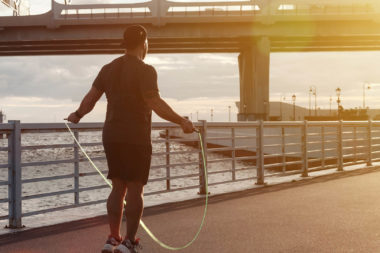

Injuries
Introduction
One can distinguish between damage caused by wear and strain and injuries that come from external trauma or accidents.
An uncertain cause on the scale is the accidents that occur due to a body having reduced function over a longer period and that is damaged as a result of that.
It is common for one-sided or hard exercise to trigger inflammation, destroy muscle tissue and cause scarring of the connective tissue.
External trauma, strikes and other external influence is often easier to heal as long as the body has a great healing ability. Damage due to wear and impaired function / mobility requires a change in routine in addition to healing.
External trauma
But, when looking broader, a treatment can have very good effect after the acute phase has passed and tissues have healed. Then, treatment can do its part to release the tension and tight connective tissue that the damage has caused.
On one occasion I (Märta) did a test where I treated a complicated case of a broken arm. There was a man of 25 years who twisted his upper arm, and the forecast was a little uncertain. The bone was completely off, and the fracture was so close to a major nerve that the surgeon did not want to operate, but wanted to let his arm heal inside plaster.
Right after the man had taken off the plaster and had been given the OK to start using his arm, his muscles were extremely tense. Biceps were in a convulsive state because of many weeks in plaster and the original injury. The shoulder was withered and all the lifting musculature stiff and painful.
After a single treatment, the cramps released and he could start practising his hand and swimming without problems and physiotherapy went very well. Otherwise, one must begin with physiotherapy to get the stiff muscles that will not respond and answer to conscious movement. Now the arm was ready to move, painless, and what remained was to train the strength back up again.
The man is a dentist and was afraid of losing his fine motor skills of the hand and arm, but was fully restored very quickly and have no problems today.
It is quite typical that the body after an acute injury is left in a state of spasm around the previously damaged parts. The cramps can be released by stretching and exercise, but it can be difficult for some to handle. Especially the neck might be difficult to restore full movement in by yourself. The cervical spine and skull base are sensitive areas that easily lock up. Then, manual treatments is often too powerful, and the nervous system resists.
Wear
In the case of damage due to wear the progress and treatment is more complicated. Partly because the cause of the pain and suffering might remain in everyday life and because the body might build up the problems during a long period and then take a longer time to recover.
It will often occur in a manner that makes the soft parts fatigued or inflamed. Either due to inflammatory diet, environment or other causes like over-straining. Where the body simply wears out and starts to hurt.
This wear can also cause lockups in the nervous system and thickened connective tissue. These conditions are linked.
We cannot divide the body into too distinctively different parts when we’re talking about damage and function. Nerves affect the muscles. The connective tissue contains lots of nerve endings. High levels of lactic acid destroy muscle tissue. Overworked muscles affect the connective tissue so that it becomes stiff. A vicious circle is started and we will need to look at all the parts together to restore full function and eliminate pain.
Strain injuries
One cause of damage to the ligaments and the passive shock absorbers is that the active person is worn down, or not active enough. A body with stiff and uneven movement takes loads to its passive shock absorbers and is more easily strained to where it wears out at unexpected movements and poor surfaces.
Most people who come with lumbago, or who stretched themselves during a fall usually already had tension in the damaged area. A soft body usually manages to be stretched to the extreme position without being damaged. When a Fascia and muscle have been shortened and stuck together, it can only withstand minimal trauma before breaking down. Therefore, it is very good to prevent injuries by using good training, stretching, and if that’s not enough, some treatment.
Some argue that tension arises as a reaction to the injury, but the injury often occurs after the active shock absorption and the muscles are overloaded for a long period to then burst after a small additional uncontrolled load.
Pathologist Julian Baker described this at the Fascia Research Congress:
“We believe that a patellar tendon just snaps off when we play soccer, or jump high or run faster than we can. But in fact, we have built the injury for a long time, we have built up the tension in the muscles, which transfers to the tendons for so long, and weakened the tendons strength for so long that at the end is enough to get out of bed to snap it off. These are the results of long-term fatigue of the tissues. Of course healing then takes time as well!”
This is evident when the pain in patellar tendons attachment points, or heel spurs, usually associated with tired and short calf muscles. If we get the calf to release, the fascia to soften and muscle cramps to end, then we can get the inflammation and abnormal load down in the tendon’s attachment reduced and the pain disappears.
This is probably the answer to why support and taping help to heal. The tape supports the musculature so that it can rest where the connective tissue does not hold together enough about the load.



































































